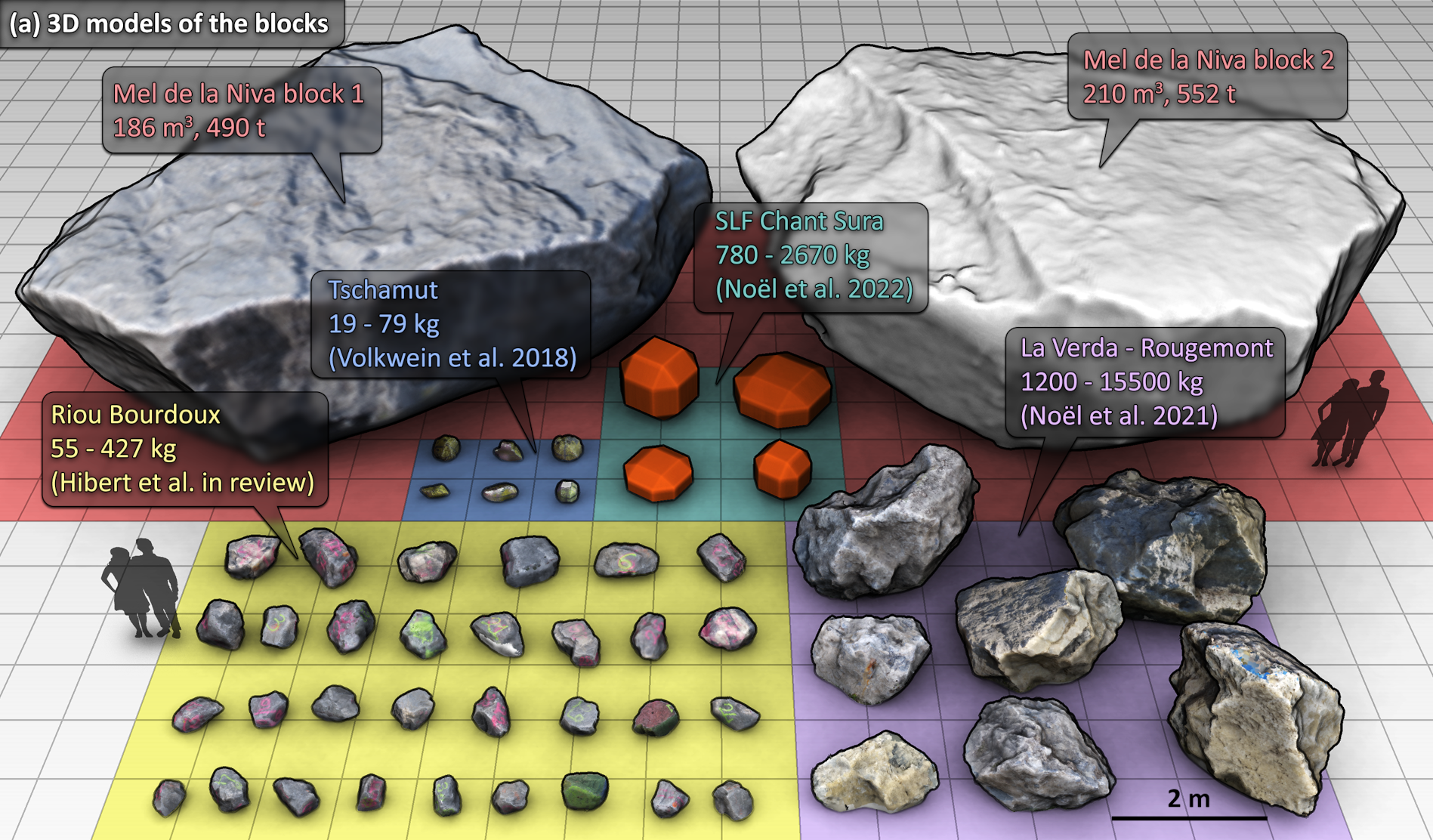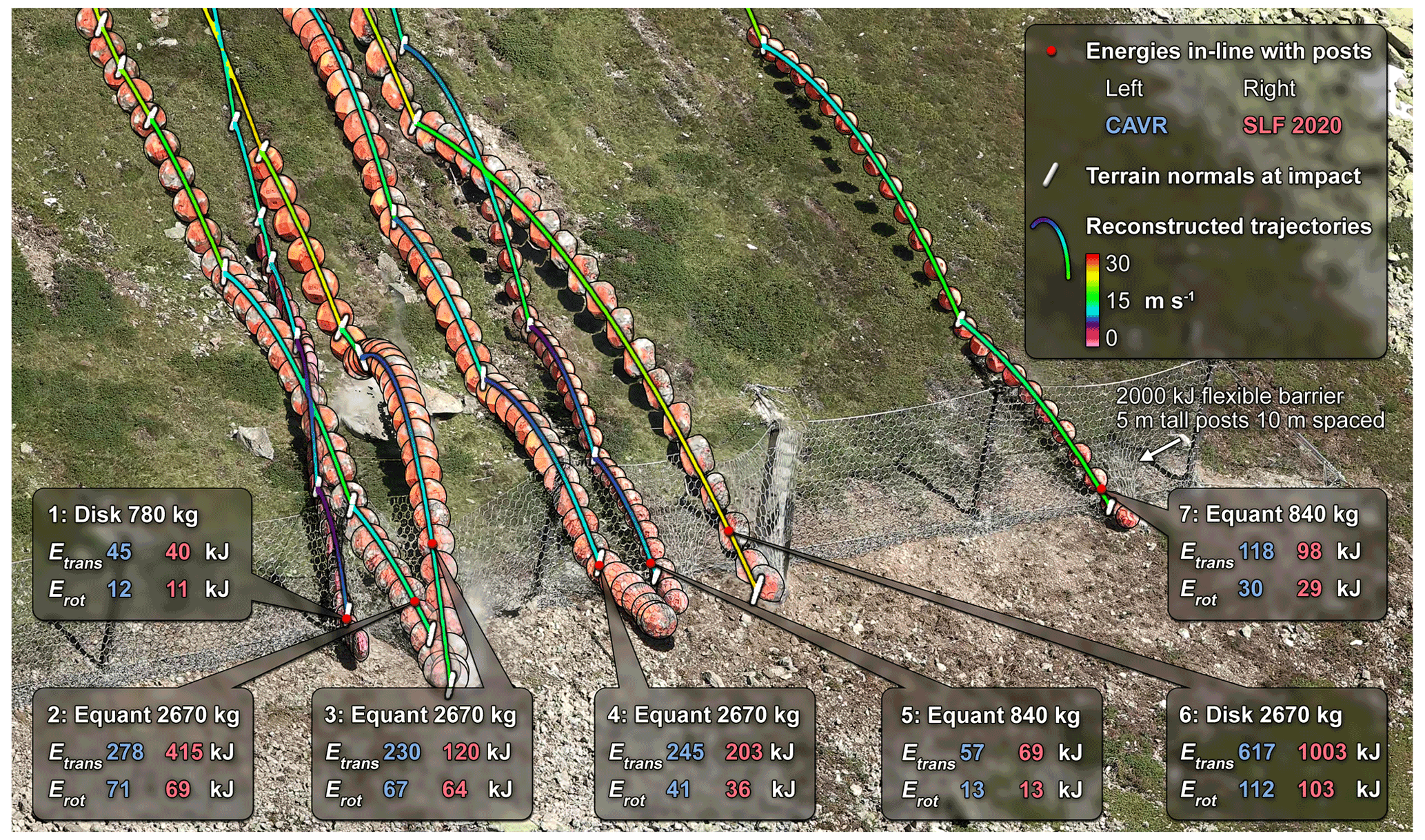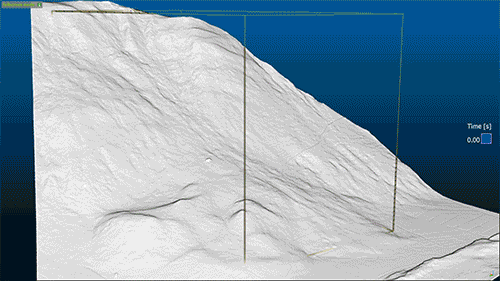What's new in stnParabel June 2021¶
New features:
The paper detailing the impact database from which stnParabel is calibrated on has been published in Landslides! The rolling friction rebound model is also described and compared to the data.
The paper describing the impact database acquisition method from which stnParabel is calibrated on has been published in Earth Surface Dynamics (ESurf)!
The paper describing the impact detection algorithm used by stnParabel has been published in Geoscience (MDPI)!
The guide has been quickly translated to English. Feel free to suggest us corrections/improvements to the translated content!
Subtitles were added to the tutorial videos.
A tutorial video about how to use the software Agisoft Metashape to generate 3D models has been added to the guide (see the Photogrammetry (SfM) subsection of the Terrain section).
The guide can now be found online at: stnparabel.org.
A download section was added to the guide where new releases of stnParabel could be acquired in the future. Feel free to have a look to it here and then, since there is no notification when a new version is available.

Block fragments from rockfall experiments and natural events. Some are related to the impact database. Taken from the Landslides publication (CC BY 4.0, Noël et al. 2023).¶

Comparison of back calculation methods. Taken from the ESurf publication (CC BY 4.0, Noël et al. 2022).¶

Comparison of the impact detection algorithm of stnParabel with those from existing simulation software. Taken from the publication in Geosciences (CC BY 4.0, Noël et al. 2021).¶
Fixes / Improvements:
The “F1” shortcut from the main stnParabel window now point to the online version of the guide.
New features (March 2021):
The angle of the ground perceived by the projectiles for the impacts against the ground and the tree stems is now exported (impacts.txt). This can facilitate the analysis and validation of the simulated trajectories.
Projectiles may resume rolling / bouncing after stopping against a trunk if the slope of the terrain permits. This leads to more conservative results and is comparable to the approach used by Dorren.

Example of trajectories with the angle of the perceived terrain represented by the white vectors of lengths d1.¶
Fixes / Improvements (March 2021):
Small corrections were made on the models of Pfeiffer & Bowen 1989, Pfeiffer et al. 1995 and Dorren 2008 (modified) after thorough review of their associated publications to ensure that they are implemented in stnParabel as in the originals. Validations are in progress by comparing their implementation with CRSP 4, RocFall 8 and Rockyfor3D 5.2.14 software.
New features (December 2020):
The trajectories are now exported with their translational velocities and time. This can be used for example to animate the simulation results and to check if they correspond to observed events.
The artificial rolling phase of the Pfeiffer models is now considered with these. The rock projectiles enter this phase when the impact to come would require a freefalling distance less than d1 / 2. The following impact is evaluated after each “roll” over a distance of d1 / 2 at constant speeds.

Example of animation of simulations (time is not to scale).¶
Fixes / Improvements (December 2020):
The vertical deviations of the custom surface roughnesses are only applied to Pfeiffer models if they increase the incident angle of impact. This therefore corresponds to the definition of the terrain roughness added in these models.
The direction of the lateral deviation due to the custom surface roughnesses is applied randomly in order to avoid favoring deviations towards one side more than the other.
A bug when importing the terrain model has been fixed. It made the point spacing sometimes not being calculated.
New features (November 2020):
Older impact models have been added to stnParabel:
- Pfeiffer & Bowen 1989 (eg. used in CRSP 1.0)
Pfeiffer et al. 1995 (eg. used in CRSP 3.0 and 4.0 or in RocFall 2020)
Dorren 2008 modified (eg. used in Rockyfor3D v5.2)
Fixes / Improvements (November 2020):
If the roughness files are not found using the full path to the files (eg if the project has been moved to another disk), stnParabel will try to find them in the dtm_roughness folder located next to the executable. If the roughness is found there, the simulations will start normally rather than being canceled.
For terrain materials, the boxes for editing φ’ and cohesion are only enabled if the Scarring model is selected. They otherwise indicate the values used by default by the Rolling friction model, even if other values have been defined for the Scarring model.
New features (October 2020):
The export of rasters is now done in GeoTIFF format which leads to a considerable increase in the speed of their export.
The tools are now compiled for the Matlab 9.7 (R2019b)runtime. The old runtime (9.4, R2018a) can therefore be uninstalled and replaced by the new one.
Fixes / Improvements (October 2020):
Following the recommendations of the Canton of Vaud, a link to the PDF of the inputs and outputs has been added to the manual. Thus, all the information useful for the proper functioning of the tools is accessible via this manual. Do not hesitate to communicate any other recommendations or constructive comments concerning the tools to the author ;-)!
This manual is now quickly accessible from stnParabel using the "F1" keyboard shortcut.
The optional terrain roughness was not added correctly according to the slope thresholds depending on the aspect of the terrain. This bug has been fixed.
An arbitrary limit has been added to the Rolling friction model so that the velocity returned after an impact cannot be below 10% of the initial velocity (e.g. the velocity returned after an impact at 50 m/s cannot be under 5 m/s ).
Several small bugs have been fixed.
New features (May 2020):
The summary is now displayed at the end of simulations regardless of the type of source used (previously it was only displayed for manually selected point sources).
It now includes information regarding impacts against the fences.
The summary is saved in the project file.
The impact points against the fences are recorded separately (it is no longer necessary to carry out a second simulation with fences in the form of an infrastructure / collector to obtain the information about the fences).
Fixes / Improvements (May 2020):
Input files infrastructure.txt, fence.txt, and wall.txt are considered whether they are written in the singular or in the plural.
The question to continue with the simulations with many sources is now asked before evaluating the terrain roughness, if necessary.
For terrain materials, the boxes for editing φ’ and cohesion are disabled by default and indicate the values used for the simulations.
A display problem of the summary when running simulations with the "space" shortcut has been corrected.